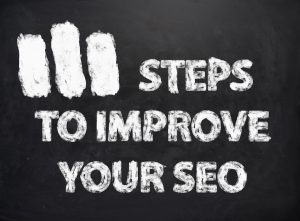Get on the Podium
Send us a message and let us know how we can help with your next project.
By Podium
 Search Engine Optimisation (SEO) can be complicated: it’s true that there are many factors that go into making a webpage rank well (or badly), from disavow files, canonical links, 301 redirects, secure connections and many more.
Search Engine Optimisation (SEO) can be complicated: it’s true that there are many factors that go into making a webpage rank well (or badly), from disavow files, canonical links, 301 redirects, secure connections and many more.
But, there are also many simple and straightforward things you can do to make your site rank better starting with these three key points.
It’s amazing how many sites we look at where this key ranking factor has been overlooked. Meta titles are the first thing that anybody sees in a search engine result page and can be a major reason why a customer chooses to click on your site over another. Meta titles can be easily edited within most content management systems and should be one of your first steps when optimising a site.
When it comes to meta titles, the rules here are simple:
It’s widely reported that meta descriptions are not a ranking factor. However, the fact that Google still highlights the keywords in descriptions suggests to us that they are still looked at and are still important. In fact, we have made huge gains on websites simply by optimising meta descriptions.
Regardless of your opinion whether they are a ranking factor, your meta descriptions are a huge influencer of whether a user clicks through to your site or not. Along with the meta title, they are the first interaction that the user has with your company and you have just a few seconds to tell them what you do and influence them to click your link, not a competitor’s.
The rules here are also simple:
These tags should be used around the main title of the page and are a key ranking factor. This is an area that’s often missed and we see many sites that either don’t have H1 tags implemented or in more bizarre circumstances, sitting around the logo or other strange places. The implementation rules, once again, are straightforward:
Finally, the page meta title and H1 can work very closely together and matching these two up will give strong ranking signals to Google.
This is how the meta title and description look for this page:-
Audit your site, check out all your titles, descriptions and H1’s to ensure they are working as hard for your business as they can be. If you need any help or advice, get in touch with Podium.
Back
Send us a message and let us know how we can help with your next project.